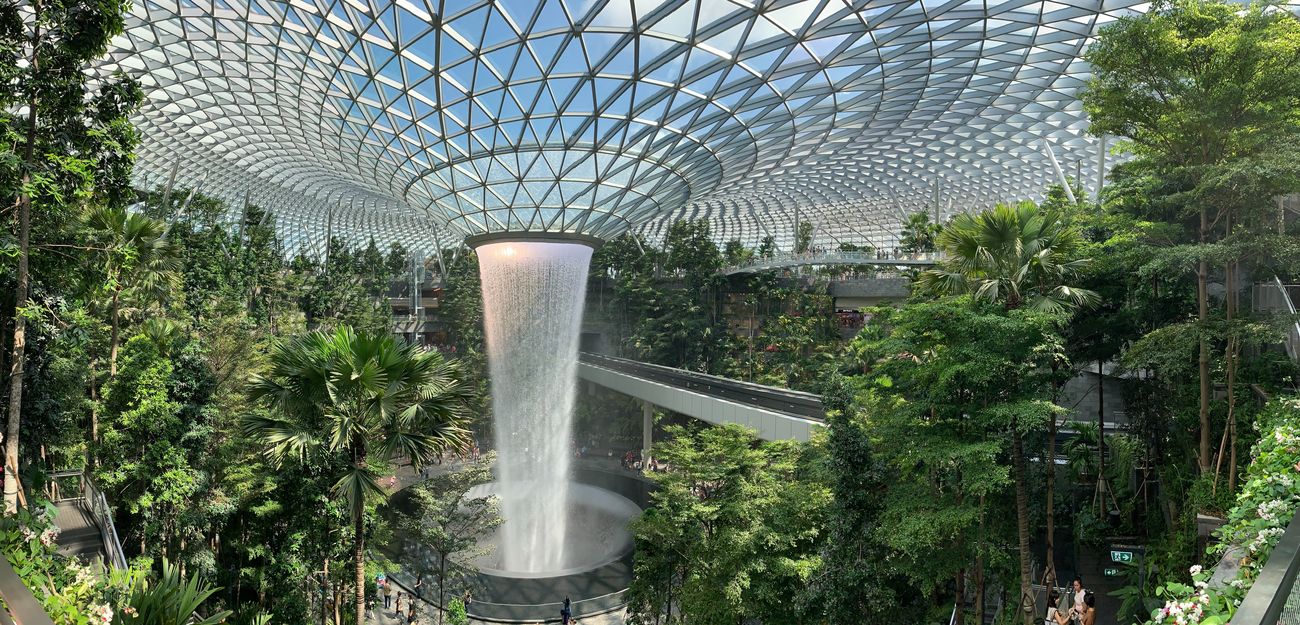Climate change: a risk and an opportunity for the real estate market?
Asset Management
Designing the City of the Future: Key Features of Sustainable Urban Planning

Asset Management

In 2015, the United Nations announced 17 Sustainable Development Goals (SDGs); number 11 is to “make cities and human settlements inclusive, safe, resilient and sustainable.” As part of that, 10 targets were outlined, ranging from providing access to sustainable transport systems to enhancing inclusive and sustainable urbanisation.
But what exactly is a sustainable city, and what indicates a place is on the path to becoming one? We explore that below.
To meet environmental challenges head-on, urban planners are designing sustainable cities that incorporate eco-friendly principles, green technology and plenty of parkland. By doing that, air pollution and carbon dioxide (CO2) emissions reduce, air quality improves, and natural resources are preserved.
In turn, the residents of sustainable cities live healthier lives, and areas like rainforests and nature reserves are less encroached upon by human settlers.
According to the 2022 Arcadis Sustainable Cities Index, the top five sustainable cities are Oslo, Stockholm, Tokyo, Copenhagen and Berlin. As consequence, it means that the room for improvement regarding all the other cities is tremendous and that is where future investments should be oriented.
Environmentally-focused urban planners take many factors into account, from energy and architecture to transport and farming practices. Let’s explore six sustainable city characteristics.

One of the most important sustainability initiatives a city can commit to is transitioning to clean energy, be it solar power, wind farms or geothermal energy. These generate far fewer CO2 emissions than fossil fuels and create three times more jobs. Cities making meaningful strides in the renewable energy arena include Malmö, Adelaide and Seoul. Paris and large French cities in general have significant progress to make to reach the same level of sustainability.

To reduce emissions and meet sustainable building certifications, architects are increasingly incorporating eco-friendly features into their designs. Methods range from using natural building materials and improving ventilation and insulation to updating existing structures with energy-efficient windows and lighting.
The majority of carbon emissions in cities come from buildings; this is where the big focus should be in the fight against global warming.

When it comes to greenhouse gas emissions, the transport sector is also one of the biggest contributors. One way to tackle that is by switching to electric public transport and encouraging its use. How? By making it cheaper, quicker and more accessible. Only then, will people choose a train or a bus over a vehicle.
Another effective strategy is promoting emission-free transportation: walking and cycling. To achieve that and make individuals feel safer, urban planners should introduce pedestrian- and bike-friendly infrastructure, including more cycle lanes and wider pavements.

This revolves around providing (and extending) access to public resources like parks, nature preserves and recreational spaces. Imaginative urban landscaping goes a long way here, making a city more appealing, livable, and diverse in terms of flora and fauna.
For example, in Arcadis’ Sustainable Cities Index, London fared particularly well from a ‘planet’ perspective. Indeed, in 2019, the Mayor launched the capital’s first Green Spaces Commission, helping boroughs transform how parks are managed and funded.

Cities aiming for carbon neutrality encourage Electric vehicles (EVs) by increasing the number of EV charging stations. The EU is a frontrunner, but even by conservative efforts, at least 3.4 million public charging points are needed by 2030 to support drivers of electric vehicles and incentivise purchases.
Accomplishing that requires new infrastructure, power grid upgrades – also linked to individual/home production of ‘green energy’, such as from solar panels - and enhanced renewable energy capabilities. In the UK, strategies include a tenfold increase in charge points by 2030 and the Electric Vehicle Smart Charging Action Plan.

To unlock the potential of growing food locally, the European Forum on Urban Agriculture (EFUA) was introduced – a four-year project designed to achieve better networking, knowledge, deployment and policies. As a result, countries like Germany, Italy and the UK are encouraging allotments, building social enterprises to create more sustainable and local food systems, and developing urban community-managed food forests.
Transitioning to a sustainable city involves a host of initiatives, including retrofitting infrastructure, upgrading energy sources and increasing green spaces. By taking a multi-pronged approach, the eco-benefits are clear to see, from reducing global emissions and preserving resources to protecting natural habitats and improving people’s lives and well-being. Every initiative counts and will contribute to the overall transitioning towards sustainable cities; Mirabaud is fully committed to do its part, at its own corporate level, embracing SDG11 in our own CSR approach, and with investment solutions proposed to investors willing to contribute as well.
Please do not hesitate to reach out to your privileged contact person at Mirabaud or contact us here if this topic is of interest to you. Together with our dedicated specialists, we will be happy to evaluate your personal needs and discuss possible investment solutions tailored to your situation.
Mirabaud Series
3 articles
Continue to